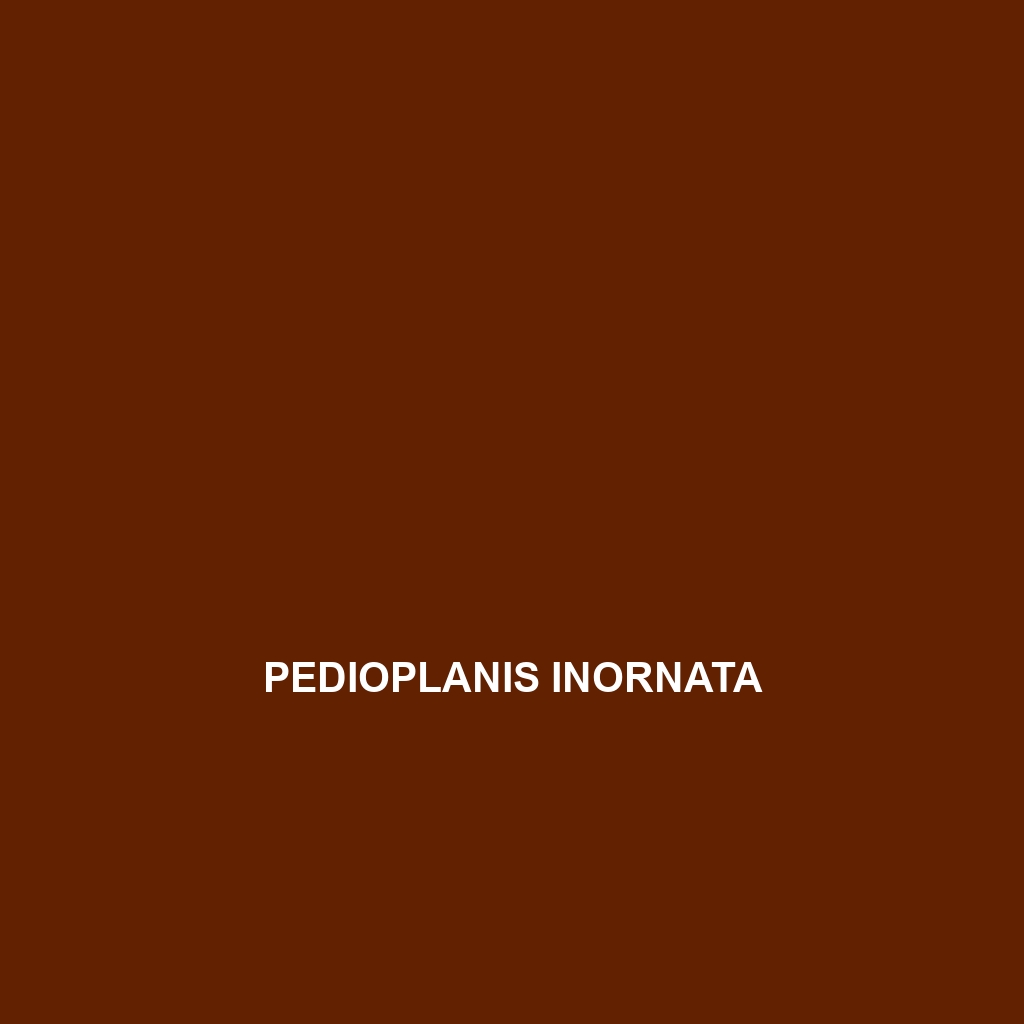Common Name
Pedioplanis inornata
Scientific Name
Pedioplanis inornata
Habitat
Pedioplanis inornata is primarily found in a variety of warm, arid climates and geographic regions across Southern Africa. This species typically inhabits savannas, semi-deserts, and light woodlands, favoring sandy or loose soils that allow for easy burrowing. The climate in these regions is characterized by hot temperatures, with distinct wet and dry seasons, leading to a dynamic ecosystem that supports a diverse range of flora and fauna. The availability of sheltering vegetation and sun-basking sites is crucial for their survival, making these habitats essential for their lifecycle.
Physical Characteristics
Pedioplanis inornata, commonly known as the Common Sand Lizard, is a medium-sized lizard that can reach lengths of up to 15 cm. The body is slender and elongated, with a tail that is typically longer than the body itself. Its coloration is generally modest, featuring a sandy or light brown base with subtle darker stripes running along its body, aiding in camouflage against the sandy environments it inhabits. A distinctive characteristic of Pedioplanis inornata is its smooth scales, which contribute to its streamlined appearance, and its slightly pronounced, elongated snout enhances its foraging capabilities.
Behavior
The behavior of Pedioplanis inornata is characterized by its diurnal activity, primarily foraging for food during the day. These lizards exhibit territorial behavior, with males often engaging in displays to assert dominance, which may include head-bobbing or pushing against one another. During the breeding season, which typically coincides with the warmer months, males are more conspicuous and engage in elaborate courtship rituals. Like many lizard species, Pedioplanis inornata demonstrates a remarkable defense mechanism; if threatened, they can exhibit rapid movement to evade predators or perform a tail autotomy, allowing them a chance to escape while the predator is distracted by the severed tail.
Diet
Pedioplanis inornata is primarily an insectivore, feeding on a diet composed mainly of ants, beetles, and other small invertebrates. The foraging behavior is opportunistic; they actively search for food during the heat of the day but rely heavily on their camouflaged skin to blend into their environment, making catches easier. Occasionally, they may consume small fruits and plant matter, albeit to a much lesser extent, showcasing a more omnivorous dietary flexibility when food is scarce. Their hunting strategy involves ambushing prey, relying on their keen vision and swift reflexes.
Reproduction
The reproductive cycle of Pedioplanis inornata typically begins with mating during the onset of the rainy season. Males will engage in courtship displays to attract females, which may include vibrant colorations in their throat and body. The females have a gestation period of approximately 6 to 8 weeks before laying clutches of 2 to 10 eggs in a burrow. After laying the eggs, the female provides no further care, as the eggs incubate independently. The hatchlings are born fully developed and ready to fend for themselves, showcasing the species’ adapted survival strategies in its harsh environment.
Conservation Status
The conservation status of Pedioplanis inornata is currently classified as Least Concern according to the IUCN Red List. However, habitat destruction due to agricultural expansion and urbanization poses significant threats to their populations. Continued monitoring of their habitats is necessary, alongside implementing conservation measures to ensure that these lizards remain a vital part of their ecosystem. Awareness and education programs are instrumental in promoting coexistence with local human populations, thus safeguarding their natural habitats.
Interesting Facts
One unique aspect of Pedioplanis inornata is its ability to tolerate high temperatures, often basking in the sun to regulate its body temperature efficiently. Furthermore, these lizards are known for their fast reflexes and agility, making them exceptional burrowers and climbers. Another interesting behavior is their method of communication, which involves subtle body language and postural cues rather than vocalizations, showcasing its adaptation to a life primarily in silence.
Role in Ecosystem
Pedioplanis inornata plays a crucial role in its ecosystem as both a predator and prey. As an insectivore, it helps to regulate insect populations, contributing to the ecological balance of its habitat. Additionally, this lizard serves as prey for various birds of prey and larger mammals, thus playing a key role in the food web. By contributing to nutrient cycling through its dietary habits and burrowing activities, Pedioplanis inornata is considered a significant component of its savanna ecosystem, improving soil health and promoting biodiversity.
